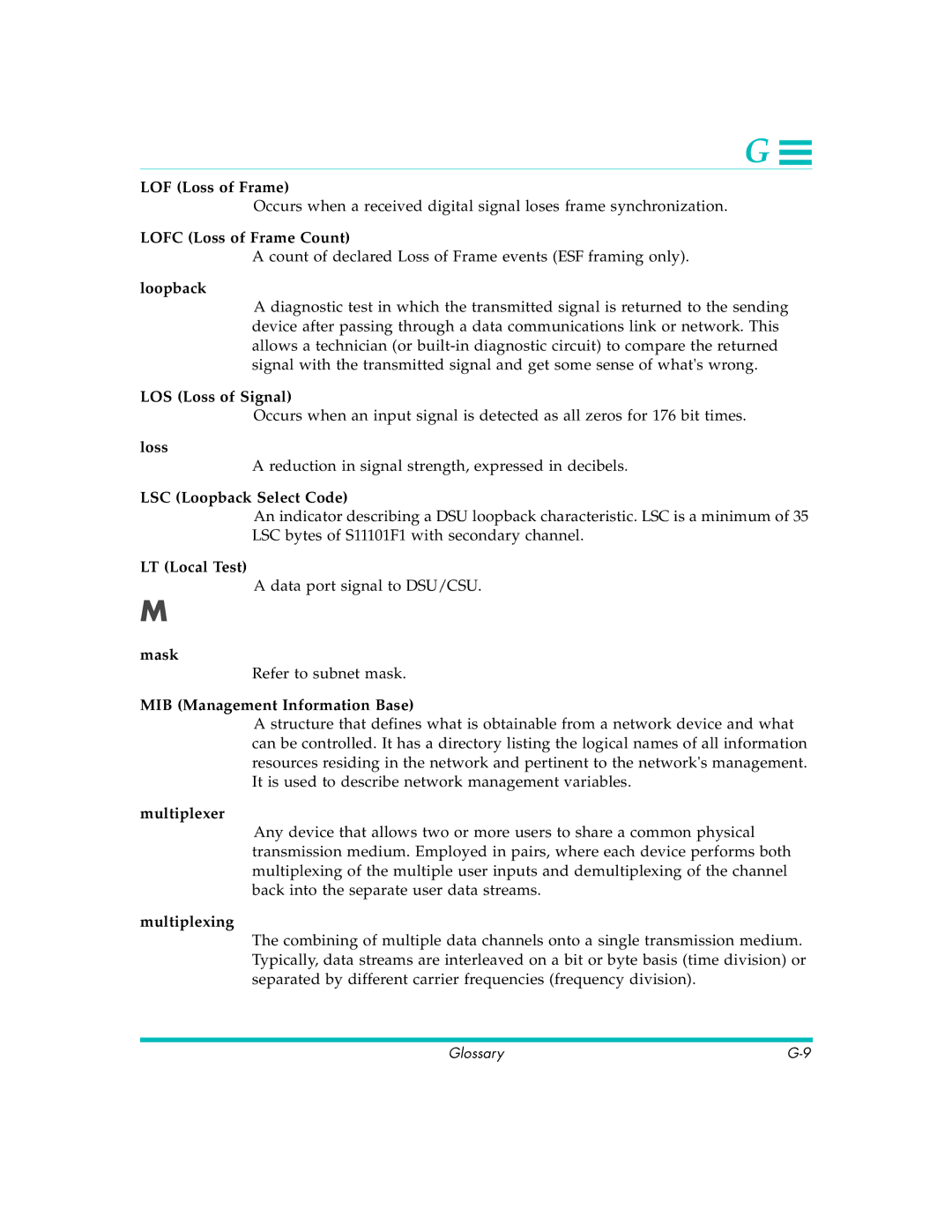
G ![]()
LOF (Loss of Frame)
Occurs when a received digital signal loses frame synchronization.
LOFC (Loss of Frame Count)
A count of declared Loss of Frame events (ESF framing only).
loopback
A diagnostic test in which the transmitted signal is returned to the sending device after passing through a data communications link or network. This allows a technician (or
LOS (Loss of Signal)
Occurs when an input signal is detected as all zeros for 176 bit times.
loss
A reduction in signal strength, expressed in decibels.
LSC (Loopback Select Code)
An indicator describing a DSU loopback characteristic. LSC is a minimum of 35 LSC bytes of S11101F1 with secondary channel.
LT (Local Test)
A data port signal to DSU/CSU.
M
mask
Refer to subnet mask.
MIB (Management Information Base)
A structure that defines what is obtainable from a network device and what can be controlled. It has a directory listing the logical names of all information resources residing in the network and pertinent to the network's management. It is used to describe network management variables.
multiplexer
Any device that allows two or more users to share a common physical transmission medium. Employed in pairs, where each device performs both multiplexing of the multiple user inputs and demultiplexing of the channel back into the separate user data streams.
multiplexing
The combining of multiple data channels onto a single transmission medium. Typically, data streams are interleaved on a bit or byte basis (time division) or separated by different carrier frequencies (frequency division).
Glossary |
